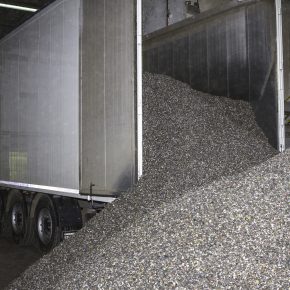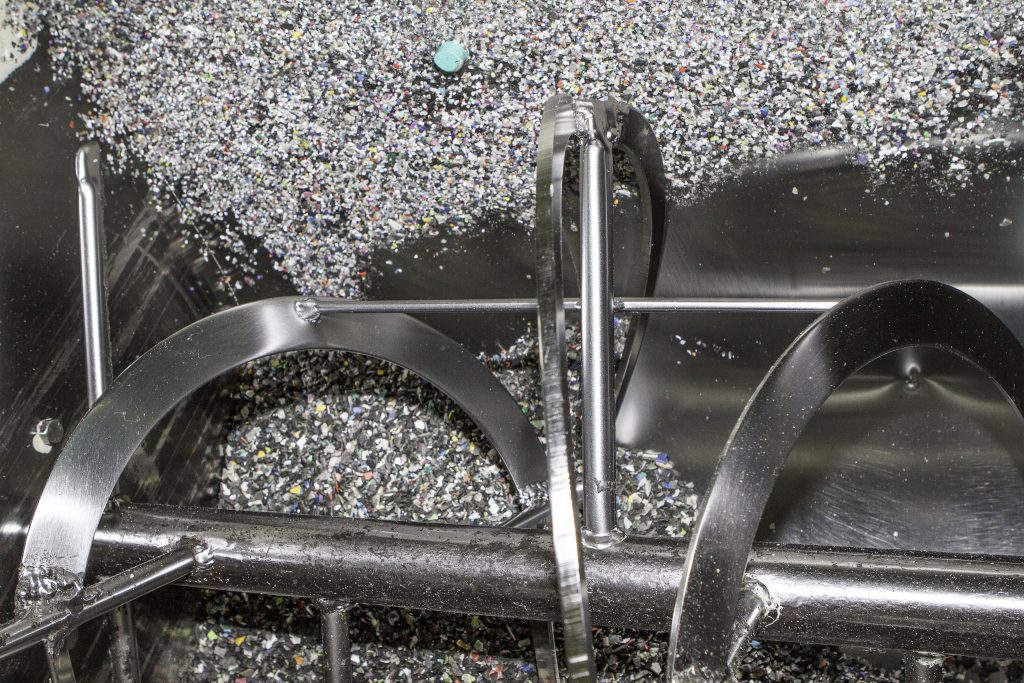
Axion: Balancing the needs of the circular economy and a toxic-free world
 Growing pressure to transition to the circular economy and the desire to eliminate legacy additives is proving to be a conundrum for the plastics recycling sector. Richard McKinlay, Head of Consulting at resource recovery specialist Axion, explores the issues and impacts on the industry.
Growing pressure to transition to the circular economy and the desire to eliminate legacy additives is proving to be a conundrum for the plastics recycling sector. Richard McKinlay, Head of Consulting at resource recovery specialist Axion, explores the issues and impacts on the industry.
“Plastic products have been an integral part of our modern lives for some decades now, providing excellent functionality in myriad applications and sectors.
Recycling is an important part of the circular economy and to keep materials flowing, there will always be a need to recover and recycle plastics, wherever possible.
But when it comes to recycling these materials, plastics containing legacy additives – Persistent Organic Pollutants (POPS) – cannot be recycled due to restrictions aimed at eliminating risk to health and the environment.
‘Legacy’ plastic
There is an enormous amount of ‘legacy’ plastic in long life goods, such as electronics, construction and automotive products. For example, almost half of all plastics from waste electrical and electronic equipment (WEEE) cannot be recycled because their POPs content exceeds permitted levels. Inevitably, these ‘contaminated’ materials have to be incinerated.
These plastics can contain additives we now know are harmful to the environment or to human health, and therefore have since been restricted for use in new products under REACH regulations.
Consequently, we are facing a huge problem of how to recycle legacy products, some of which are in theory recyclable, but they contain hazardous additives that are now restricted. This is making recycling more difficult, whereas in a circular economy, the process should be made easier. Achieving a circular economy for WEEE plastics is looking more distant because of more stringent POPs limits and the desire to be ‘toxic–free’.

Even the potential presence of legacy additives is enough to prevent recycling, and with costly laboratory analysis required to prove the absence of banned additives often recyclers will not process these ‘legacy’ plastics.
Now the burden of these legacy additives, and responsibility for them, is on waste managers and recyclers rather than the manufacturers who profited from them in the first place. Producers want to demonstrate ‘producer responsibility’ by ensuring their goods can be recycled, yet when it comes to items like waste electronics it is becoming more and more difficult.
Legally, POPS waste must be destroyed. As this waste is often mixed with non-POPs plastics, which cannot be separated, then the mixture needs to be destroyed and raw material resources are lost.
So, where does this leave us?
Although technology is continually improving to be able to separate POPs, such as X-ray sorting to identify bromine, this comes at a high cost compared to conventional methods.
Then there is the constant threat of more additives becoming restricted and moving to the banned POPs list. Amidst all these regulations, there are still recycling targets to meet, and it seems the recyclers are left to deal with it all.
Stopping harmful additives at source in manufacturing is absolutely vital, but if they have historically been used, they will remain in the waste for many years. The ability of the waste industry to adapt must be considered when restricting more additives.
Ultimately, what is needed is a collaborative approach with manufacturers, recyclers and regulators all working together towards maximising what we can recycle and removing hazardous substances. Recyclers need continued cross supply chain support.
If regulations become too burdensome to recycle responsibly, the danger is that waste could be forced down illegal and unregulated routes leading to a worse environmental outcome in the future.
Axion Polymers wrote a piece earlier this year about why women should consider careers in recycling. Click here to give it a read.
Twitter: @axion_group
LinkedIn: Axion Group
Contact Axion: info@axiongroup.co.uk
Visit Supplier's page
Latest news

31st March 2025
Stannah Lifts urges lift owners to prepare for the PSTN switch over
Stannah Lifts, a leading provider of lift solutions, is calling on businesses and facility managers to act now and upgrade their lift communications systems to ensure they are ready for the UK’s new high-speed, GSM digital network.
Posted in Accessibility, Articles, Building Industry News, Building Products & Structures, Building Regulations & Accreditations, Building Services, Facility Management & Building Services, Health & Safety, Information Technology, Interiors, Lifts, Restoration & Refurbishment, Retrofit & Renovation
31st March 2025
Delta: Lift Pit Waterproofing - Type A solutions
Delta Membranes has recently worked on a project whereby the scope was to provide a waterproofing solution to a newly constructed lift pit for a four-storey residential block.
Posted in Articles, Building Industry News, Building Products & Structures, Building Services, Case Studies, Concrete, Cement, Admixtures, Damp & Waterproofing, Facility Management & Building Services, Restoration & Refurbishment, Retrofit & Renovation
31st March 2025
HMG Paints renew partnership with Belle Vue Aces Speedway
HMG Paints has renewed its partnership with Belle Vue Aces for the 2025 season. This year marks a particularly exciting chapter for Belle Vue Speedway, as the club and National Speedway Stadium will host an electrifying double-header of the FIM Speedway Grand Prix in 2025.
Posted in Articles, Building Industry News, Building Products & Structures, Case Studies, Interiors, Paints, Paints, Coatings & Finishes, Posts, Restoration & Refurbishment, Retrofit & Renovation
31st March 2025
Ideal Heating sponsored CIBSE BPA Engineer of the Year announced
As the sponsor of the Engineer of the Year award at the Chartered Institution of Building Services Engineers (CIBSE) Building Performance Awards, Ideal Heating Commercial was delighted to present the award to Volkan Doda, Head of Design Technologies at Atelier Ten.
Posted in Articles, Awards, Building Associations & Institutes, Building Industry Events, Building Industry News, Building Products & Structures, Building Services, Facility Management & Building Services, Heating Systems, Controls and Management, Heating, Ventilation and Air Conditioning - HVAC, Pipes, Pipes & Fittings, Plumbing, Retrofit & Renovation
 Sign up:
Sign up: